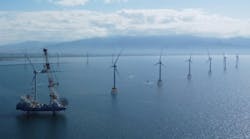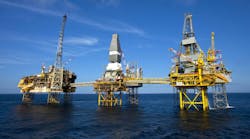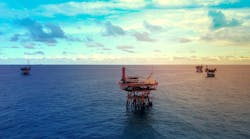View Article as Single page
China
China's offshore and marine industry is poised for significant growth in the next few years, as the country strives to reverse its dependence on oil and gas imports. By 2012, imports accounted for 56% of China's oil and gas usage, and are likely to hit 60% before the end of this decade. And in its 12th five-year plan, the Chinese government announced plans to more than double its investment in offshore E&P to $48 billion, up from $19 billion in its 11th five-year plan.
Recognizing this potential for continued growth in China's offshore oil and gas market, Keppel Offshore & Marine (O&M) signed a management services agreement in April 2014 to manage Titan Quanzhou Shipyard Co.'s TQ5 shipyard. Located in Quanzhou, Fujian province, TQ5 is still under construction but is shaping up to be one of China's largest yards. Once complete, the shipyard will occupy a total area of 110 hectares (272 acres) along 3,600 m (11,800 ft) of coastline and will have four ultra-large and wide dry docks, including one that will be 80 m (263 ft) wide. This will enable it to undertake double-hull vessel projects such as FPSO conversions. In addition, the yard will be equipped to take on repair and construction jobs for jackups and semisubmersibles.
Under the management agreement, which is for a 30-year period and includes an option for renewal, Keppel O&M will undertake projects using its proprietary designs. This agreement fits in with Keppel O&M's "Near Market, Near Customer" strategy of managing and optimizing the operations of shipyards in Brazil, the Netherlands, the US, and the Philippines to serve projects in those regions.
This is just one of the latest examples of how Chinese shipyards are strengthening their capabilities by entering into long-term alliances with foreign companies. Another example is the partnership between COSCO and Sembcorp Marine that was signed in July 2004.
This mutually beneficial transaction not only allowed Sembcorp Marine to enlarge its footprint in China, but also it helped COSCO build its competency in FPSO conversions. As a result, COSCO has secured several FPSO construction contracts in recent years, such as the $370-million contract to build an FPSO with a storage capacity of 400,000 bbl of oil. The FPSO, which will go to a European company, is scheduled for delivery in June 2015.
South Korea
The shipyards of South Korea traditionally have been the global center of manufacturing for FPUs. And the bigger shipyards in the country – Hyundai Heavy Industries and Samsung Heavy Industries in particular – are aiming to hold on to that position by securing long-term newbuild orders and building larger and more technically complex vessels.
Samsung Heavy Industries, for example, won an order last year for the world's largest FPSO, worth $3 billion. The FPSO, which will be 330 m (1,083 ft) long, 61 m (200 ft) wide, and 34 m (112 ft) high, will have a storage capacity of 2.3 MMbbl. The topsides alone will weigh 36,000 tons, and will largely be built in Nigeria, close to its final destination of the Bonga deepwater project in the Niger delta.
In advance of the resurgence in drilling activity in the US Gulf of Mexico, Hyundai Heavy Industries is supplying two new ultra-deepwater drillships, theNoble Tom Madden and the recently completed Rowan Renaissance, which are both scheduled to begin work in 2015.
The expansion efforts of these and other Asian shipyards suggest that if the demand for ultra-deepwater rigs truly does pick up in the next two years, a newer, larger, and more technically complex fleet of vessels will be ready.




